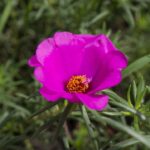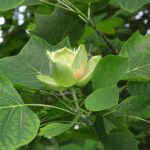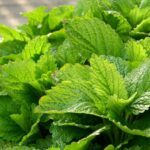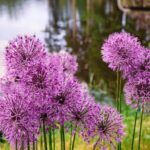Light requirements of the amethyst hyacinth
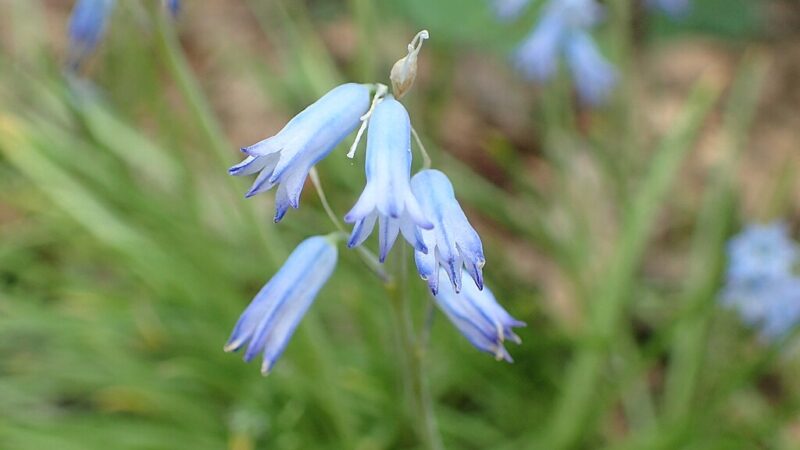
Understanding the light requirements of Brimeura amethystina is essential for its successful cultivation, influencing everything from the vigour of its growth to the profusion of its delicate, bell-shaped flowers. This adaptable bulbous perennial thrives in a range of light conditions, a trait that makes it a versatile choice for many garden situations. While it performs admirably in full sun, it is equally at home in the dappled light of partial shade. The ideal exposure can often depend on the specific climate, with cooler regions favouring sunnier spots and warmer areas necessitating some protection from the intense afternoon heat. Providing the right balance of light will ensure the plant can photosynthesize efficiently, storing the energy needed for a spectacular spring display.
Optimal light conditions
The ideal light exposure for Brimeura amethystina is a location that receives either full sun or partial shade. In many temperate climates, a position in full sun is perfect, meaning it receives at least six hours of direct, unfiltered sunlight per day. This level of light exposure promotes strong, sturdy stems and encourages the most prolific flowering. The sunlight provides the necessary energy for the plant to conduct photosynthesis effectively, which is critical for building up the nutrient reserves in the bulb that will fuel the next year’s growth and bloom cycle. A sunny spot at the front of a border or in an open rock garden is an excellent choice.
In gardens with hot, intense summers, a partial shade location can be more beneficial. Partial shade typically means the area receives between three and six hours of direct sun per day, or is in dappled light for most of the day. A spot that receives bright morning sun followed by shade in the heat of the afternoon is often considered ideal. This protects the plant from the stress of excessive heat and potential leaf scorch, while still providing enough light for healthy development. Such conditions often exist on the edge of woodlands or on the east-facing side of a building or wall.
The plant’s natural habitat provides clues to its light preferences. Brimeura amethystina is native to the mountainous regions and open woodlands of the Pyrenees. In these environments, it might grow in open, sunny alpine meadows or in the dappled shade cast by deciduous trees. This adaptability is what makes it such a versatile garden plant. It can be successfully integrated into various garden designs, from sunny, gravelly rock gardens that mimic its meadow habitat to more naturalistic, woodland-style plantings under the canopy of larger shrubs or trees.
It is important to consider the changing light patterns throughout the year. Brimeura amethystina does most of its growing and flowering in the spring, often before deciduous trees have fully leafed out. This means that a location under a large maple or oak tree might be in full sun during the plant’s active growth phase but will become shadier as summer progresses. This is a perfect scenario for the amethyst hyacinth, as it receives the bright light it needs in spring and is then shaded and kept cooler during its summer dormancy period.
More articles on this topic
The effects of insufficient light
While Brimeura amethystina is tolerant of partial shade, growing it in conditions of deep or heavy shade will lead to a noticeable decline in performance. Insufficient light is one of the primary reasons for a failure to flower or for sparse, disappointing blooms. Without adequate sunlight, the plant cannot produce enough energy through photosynthesis. This energy deficit means it lacks the resources required to form flower buds and sustain a vibrant floral display. The plant may produce foliage, but the main attraction, the flowers, will be significantly reduced or completely absent.
In low-light conditions, the foliage of the plant is also affected. The leaves may become elongated, weak, and floppy as they stretch towards the available light source, a phenomenon known as etiolation. The normal, healthy green colour of the foliage may also appear pale or yellowish. This weak, spindly growth is not only unattractive but also makes the plant more susceptible to physical damage from wind or rain and can potentially make it more vulnerable to pests and diseases. The overall structure and vigour of the plant are compromised.
Over time, a lack of sufficient light will weaken the bulb itself. Each year, the bulb will expend energy to produce leaves, but if those leaves do not receive enough light to replenish and increase those energy stores, the bulb will gradually diminish in size and vitality. This leads to a cycle of decline where the plant becomes progressively weaker each season, eventually fading away entirely. If you notice your Brimeura amethystina is consistently producing few flowers and weak foliage, reassessing its light exposure should be your first step.
Transplanting the bulbs to a sunnier location is the only effective remedy for problems caused by insufficient light. The best time to do this is in the late summer or early autumn when the bulbs are dormant. Carefully lift the bulbs and move them to a new site that offers the full sun or bright partial shade they require. With the improved light conditions, you should see a marked improvement in the plant’s health and flowering performance in the following spring season.
More articles on this topic
The impact of excessive light
In most cool and temperate climates, it is difficult to provide too much sun for Brimeura amethystina. However, in regions with very hot and intense summer climates, such as the southern United States or Mediterranean areas, planting in a location that receives relentless, all-day sun can cause heat and light stress. The most obvious symptom of this is leaf scorch. The tips or edges of the leaves may turn brown, dry, and crispy, or develop bleached, whitish patches where the plant’s tissues have been damaged by the intense solar radiation.
Excessive sun and heat can also cause the flowers to fade more quickly, shortening the duration of the bloom period. The delicate colours can appear washed out, and the individual flowers may wilt prematurely during the hottest part of the day. Furthermore, the intense sun will cause the soil to heat up and dry out much more rapidly. This can lead to water stress, even with regular irrigation, as the plant may lose moisture through its leaves faster than its roots can absorb it from the soil. This constant stress can weaken the plant over time.
For gardeners in these hotter climates, the solution is strategic placement. Selecting a site that provides direct sun in the morning and some light shade or filtered light during the hottest afternoon hours offers the best of both worlds. This could be a location on the eastern side of a structure, or underneath high-canopy trees that provide dappled shade. This approach ensures the plant receives ample light for photosynthesis while being protected from the most damaging and stressful conditions of the day.
Another strategy to mitigate the effects of intense sun is to use a layer of organic mulch on the soil surface. A 2-3 centimetre layer of bark chips, shredded leaves, or compost can help to keep the soil cooler and retain moisture for longer, buffering the roots from extreme temperatures. This simple practice can make a significant difference in reducing heat stress on the plant, allowing it to thrive even in a location that receives a considerable amount of direct sun.
📷: Krzysztof Ziarnek, Kenraiz, CC BY-SA 4.0, via Wikimedia Commons





